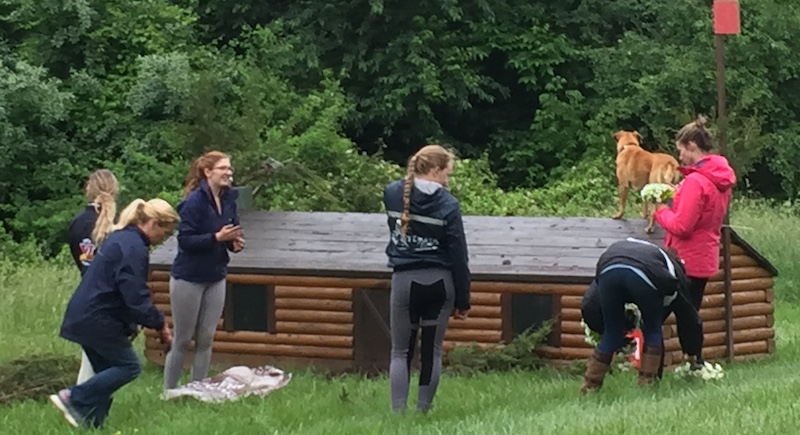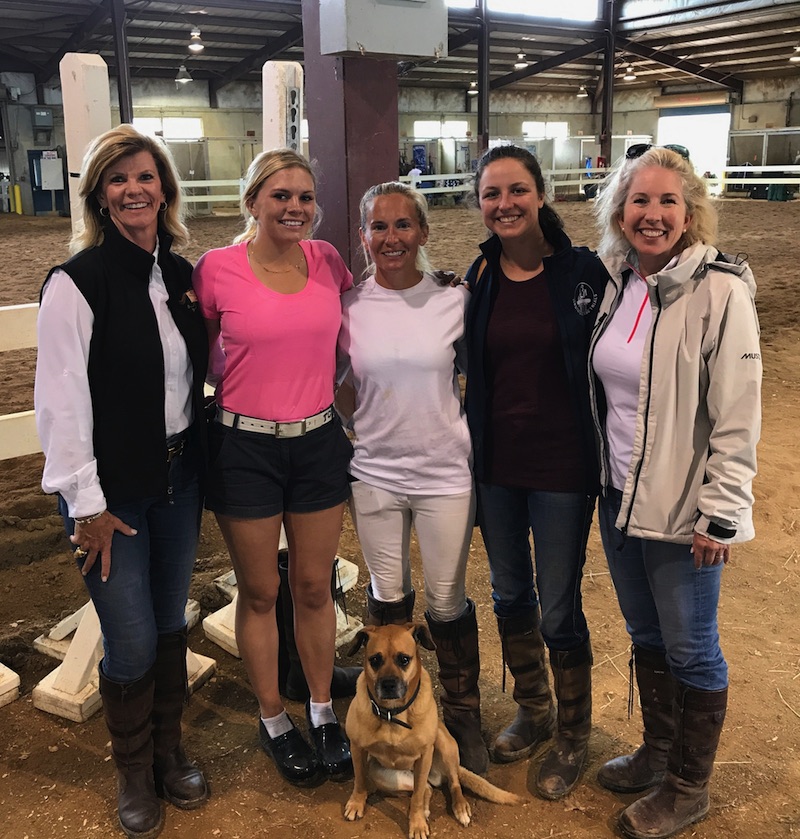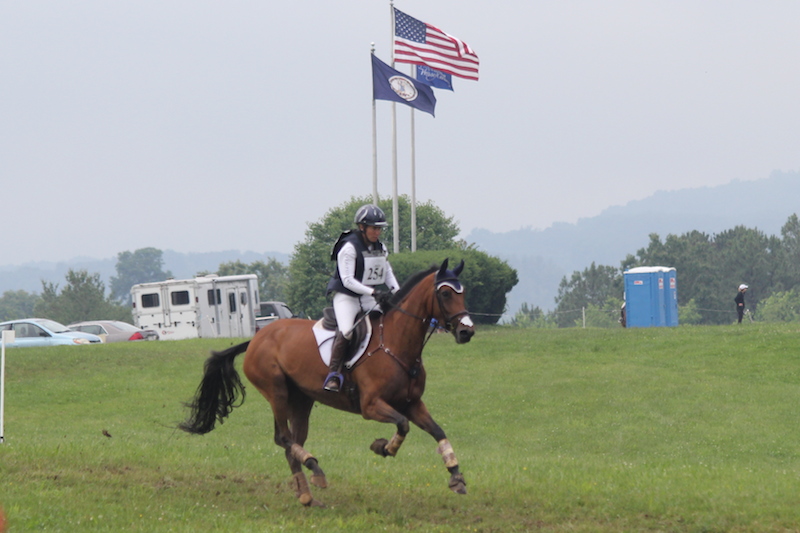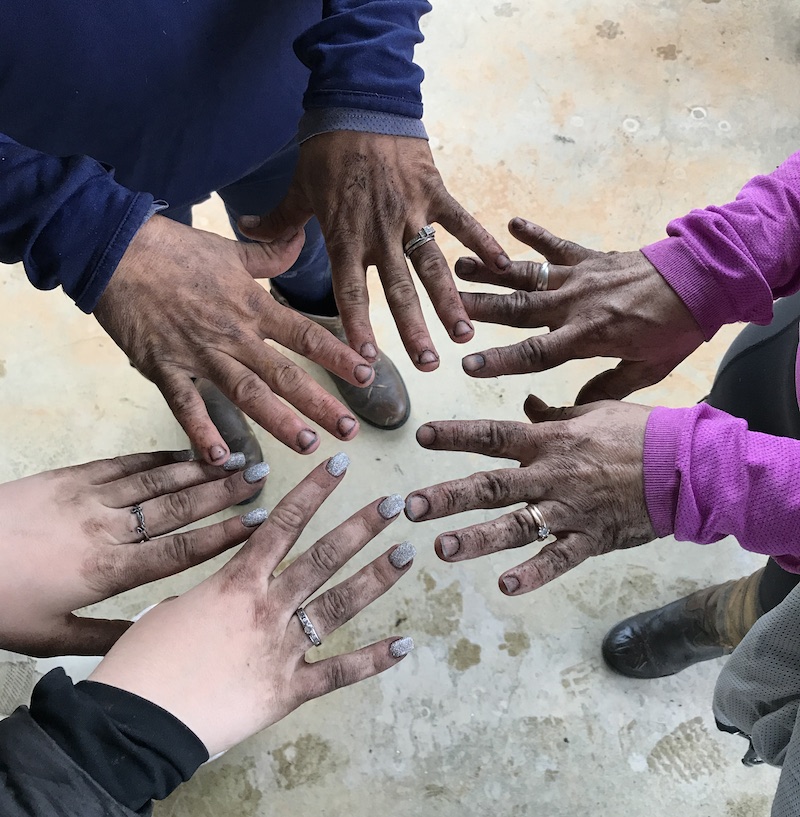It seems like the sport of eventing in America has been seeing an enormous amount of change this year: from many upper level horses retiring (including my own Novelle), our Technical Advisor stepping down, the Kentucky CCI**** losing Rolex as a title sponsor, etc.
Some of these changes are positive, and some are negative. Some will bounce back and forth between the two distinctions. When looking at the factors of what dictates change in our sport, I believe it is important to identify that there are numerous factors to each change. Every single person involved in these changes has a role, and these roles must work together to make sure that the changes that are happening fall into the positive category.
I believe that we all could do a better job of supporting each others’ roles to make our sport a better and more positive one for the future. No matter whether you are an Olympic gold medalist, an owner, a coach of walk-trot kids, an organizer, a farrier, a parent, a veterinarian, a course designer, a maintenance worker, a show secretary, (the list goes on and on) your role in the future success of our sport is vital.
A few people, like my husband Andy Bowles, wear many hats in the sport of eventing. Andy is a three-/four-star FEI Eventing Technical Delegate, an organizer, a coach, a rider’s spouse, a farm director, fence builder, safety enthusiast, and course designer, among the countless other duties he performs.

At night he’s my husband, during the day he’s the boss!
From the day we met, I was enamored with his unending knowledge and passion within the sport. I have never met someone whose daily mission is to see the sport to the next level more than him. When he originally took over organizing the Virginia Horse Trials, I would admit my first thought was, “how hard could organizing a horse trials really be?” As the first few events came and went (two of which I attended), I was still confused by all the fuss.
This year, I decided to take a larger role in helping Andy with his event. This whole marriage thing is pretty awesome, but the give and take thing is a little new to me. Andy has always given up anything to help me achieve my goals within the sport, after some reflection it seemed logical that I should reciprocate.
My jobs at the Virginia Horse Trials seemed pretty easy—I was to assign all the stabling and be in charge of decorating the cross-country courses. This was in addition to riding two horses of my own, and coaching 11 students from training to CIC** level (including five first-time one-star riders). As anyone who knows me can attest, I thrive when the going gets tough so this rigorous schedule seemed right up my alley.

My brave one-star first-timers!
I am so blessed to have a great team of barn management, working students, and staff that I was able to leave for Virginia three days before my barn manager and working student drove the horses to the event. Previous to this, I had begun the process of my first task, assigning the stabling.
ADVERTISEMENT
How hard can it be? There are 500 horses and 700 stalls… PIECE OF CAKE….. well, not exactly.
You see, my group is pretty easy, 13 horses all under one name, Tempus Eventing. There were several other groups with similar situations, nice big chunks of stalls assigned to trainers—super easy. But, then came the groups of three or four riders who liked to challenge my detective skills by listing five or six riders they wanted to be with. The problem with this is that I would have to manually hunt through the list of 500 people only to find out that the people this particular rider wanted to be with didn’t enter the event. It was truly mind-boggling.
After I jigsawed the riders into positions within barns as best as I could, my friend and I had to manually enter the assignments into the spreadsheet for the stabling office. I spent a total of 30 hours assigning stables and completed the task on the Monday morning of the event (we had horses arriving Monday night—phew).
The next challenge with my job was the multiple changes I got to stabling requests on Tuesday and Wednesday, which is something as a rider I might not consider a big deal, but from an organizer’s perspective presents quite a challenge at a time where other things should be taking priority.
My other job at the event was to decorate the cross-country courses (yes, I said courses plural—the Virginia Horse Trials has two). I will admit this was by far my favorite job.
I really enjoyed going around and trying to creatively make the jumps look beautiful all while trying to help the course designers achieve their goals of making the questions fair and safe. I had a group of my students helping me by the end and I think they all learned a lot about what the course designers were trying to accomplish.

The decorating crew hard at work.
Volunteering at the event isn’t all serious business and I think everyone enjoyed being a part of the team that pulled it off. In addition to my kids who helped decorate, we had parents stuffing packets, dads setting the show jumping course, people shuttling ice in the vet box, moms fence judging. This wonderful group of people helped pull the event together and in the process made memories that went far beyond just pulling into the horse show and competing for themselves.

Some of our volunteer crew who helped all weekend (from left): Julie and Alyssa Phillips (Alyssa also competed three horses), myself, and Brindley and Ann House, who half-own my two horses. Brindley assisted the course designer and Ann assisted the FEI steward.
I learned a lot that week at Virginia. I learned that it takes a village of people to pull off the events that we as riders and trainers rely on to develop our horses and riders. The technical delegate helped flag and number the cross-country after arriving early from overseas, the show secretary passed out the free coffee mugs that came with the entries, the steward went out of her way to tell the terrified one-star newbies to “smile,” a mountain of volunteers moved the show jumping to give the novice level riders safe footing, and the list goes on.
ADVERTISEMENT

I took a break from my duties to ride Rocktop Dreamer across the beautiful hills in Virginia.
I learned that the people who are responsible for the event take their jobs more seriously than you can imagine. My husband gets all of about four hours of sleep during the week of his event because he is fretting about the weather/footing, the courses, the comfort and happiness of his clientele. The technical delegate who all week was laughing and smiling was serious business on cross-country day because he takes the safety of the competitors personally. The show jumping course designer watched every rider tackle his course so that he could learn from the good rides and the bad. Running an event is serious business, and I as a competitor certainly underestimated what it takes to pull it off.

I may have overworked them all.
So how can we as competitors, parents, and spectators work to help our organizers?
Volunteer—even for an hour. Write event evaluations—both positive and negative. Fill out your entries completely and on time (and PLEASE PLEASE PLEASE use one group name on your stabling request). We can get our sponsors and owners involved (my owners spent the week volunteering in Virginia and I think they had a blast). Most of all, we can say, “thank you.”

Many hands make light (if dirty!) work.
The other relationship that needs improvement for the organizer/competitor relationship to flourish is in the governing group of our sport both nationally and locally. I realize that many areas have a plethora of events and competitors with which to fill them, but likewise (as in the case of my home area) we have a very limited amount of events, a very finite number of competitors, and a relatively small window of time in which to accomplish our calendar (due to extreme heat in the summer).
In this case, we need our governing councils to sit down with our organizers and competitors to develop a calendar that is conducive to producing horses and riders. A jumbled calendar with too many events stacked on one another, or events held at inopportune times, or too many FEI events bunched in a small area of time is a common problem that hurts the organizers, the competitors, and everyone in the “ecosystem” that is our sport.
I challenge these groups to try and get together and work toward what is best for the sport in general, not just one event in particular. If this can be accomplished, I believe everyone will benefit.
Organizers need to work to satisfy riders so that their businesses stay healthy, just like riders need to work to satisfy organizers so that we continue to grow the sport in our country. There are so many other symbiotic relationships in our sport but this is one example of how working together for a better sport can help us weather the changes as our sport continues to evolve.
Angela Bowles is a four-star event rider based in Burleson, Texas at her Tempus Eventing, where she trains horses and riders. Bowles and the 15.3-hand off-the-track Thoroughbred mare Novelle completed the Rolex Kentucky CCI**** twice, in 2015 and ’16 (read all about Novelle in “The Most Unlikely Horse Of A Lifetime“). She retired Novelle from the upper levels in early 2017 and her student Kalli Core is now competing her.














